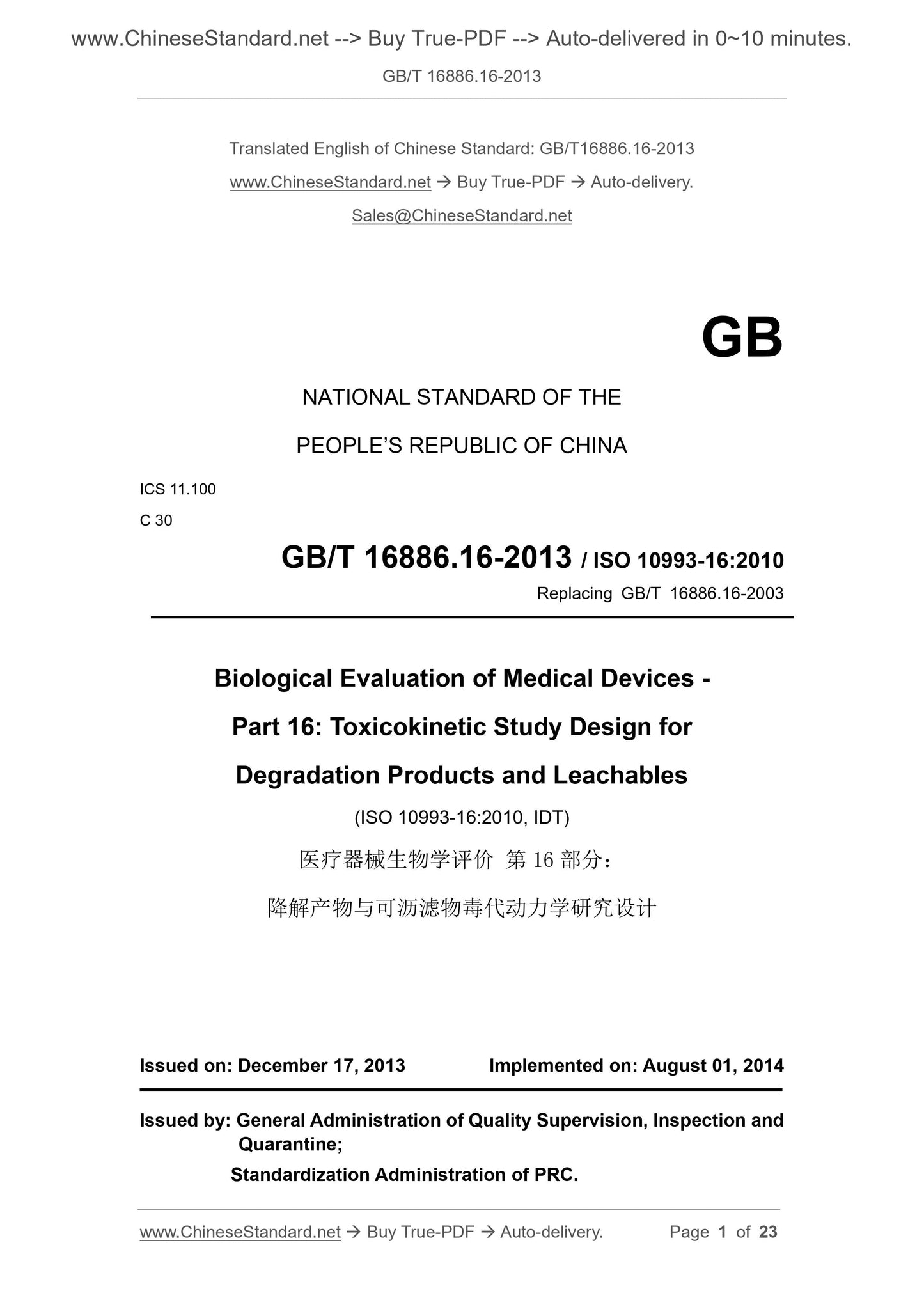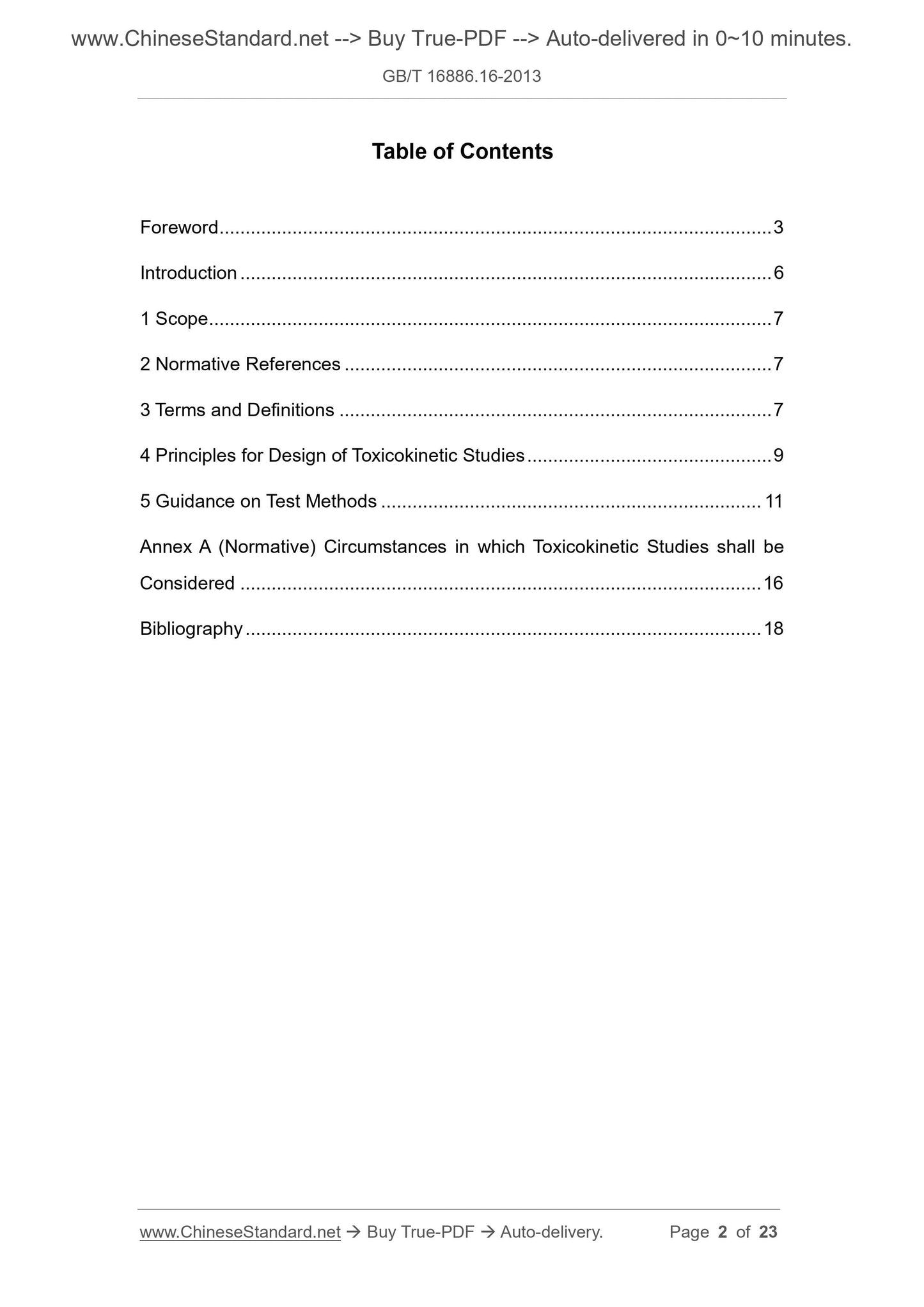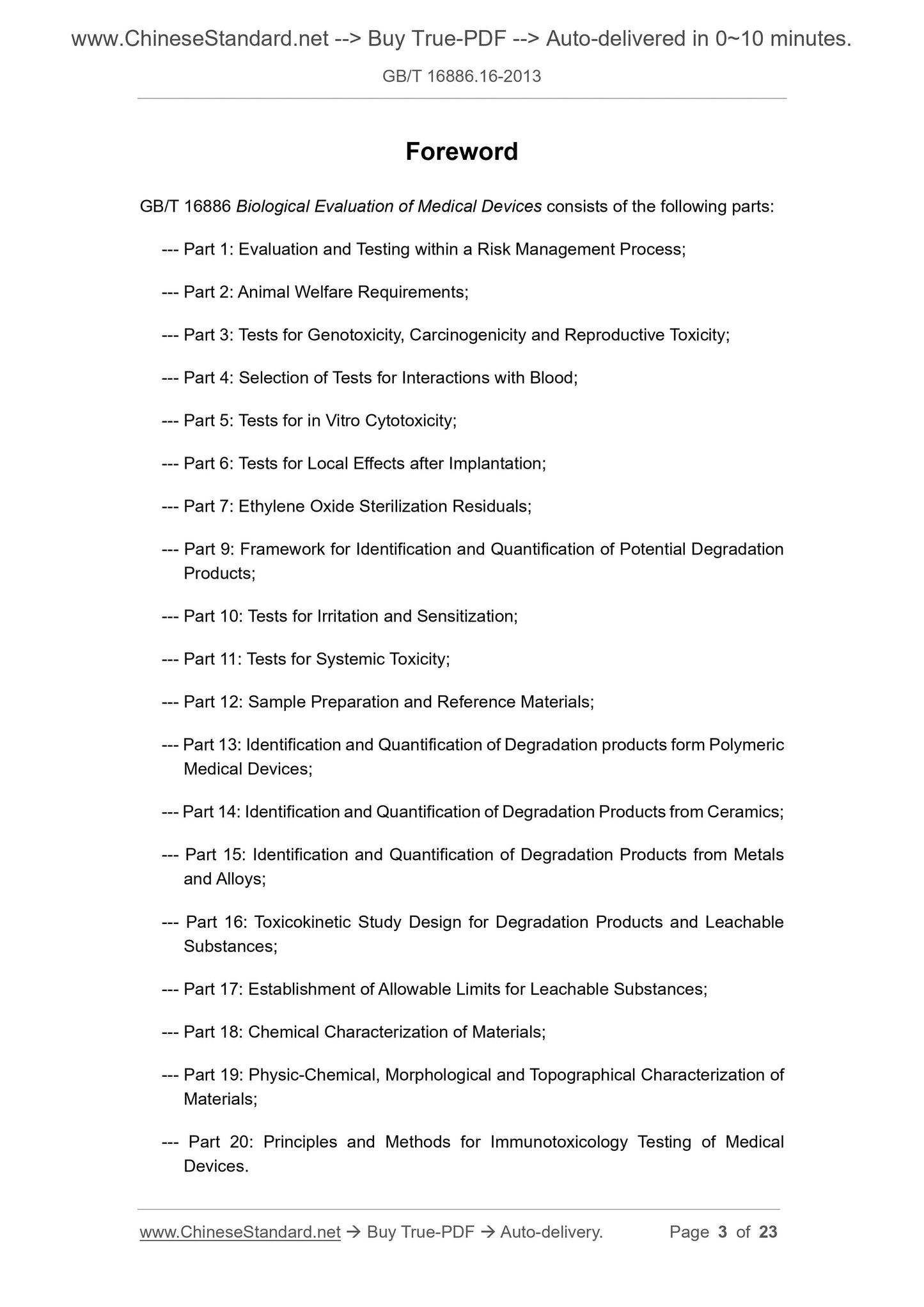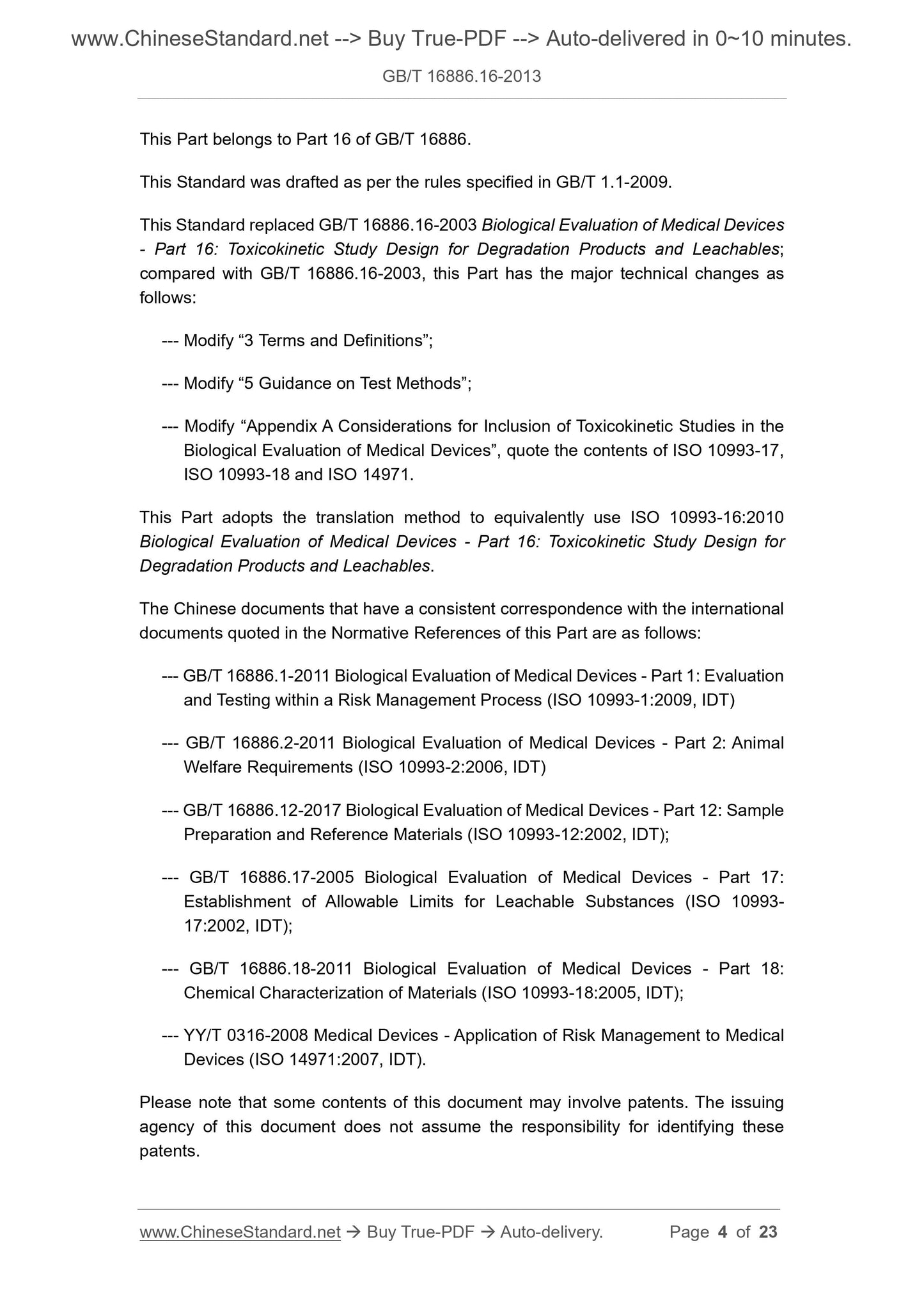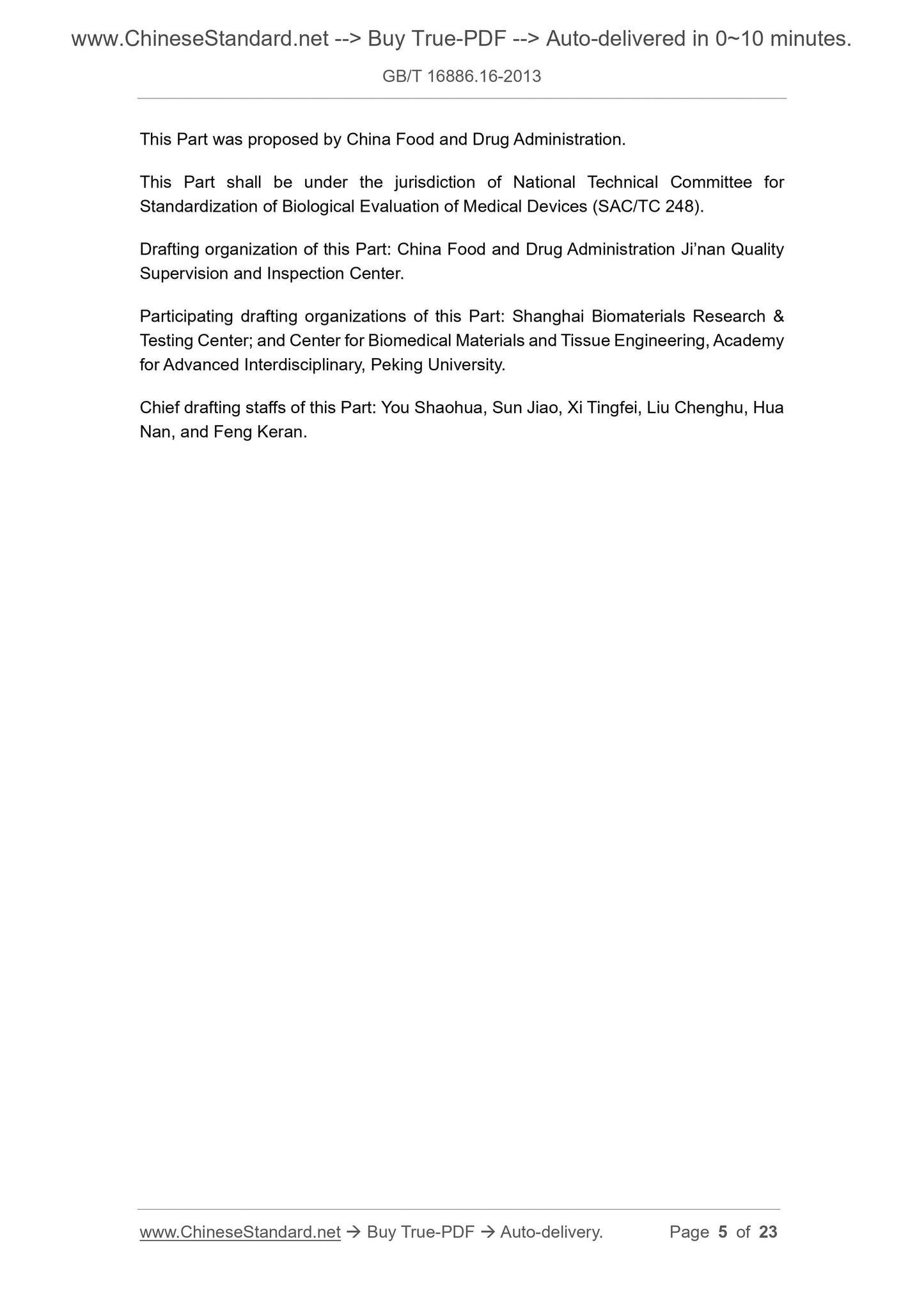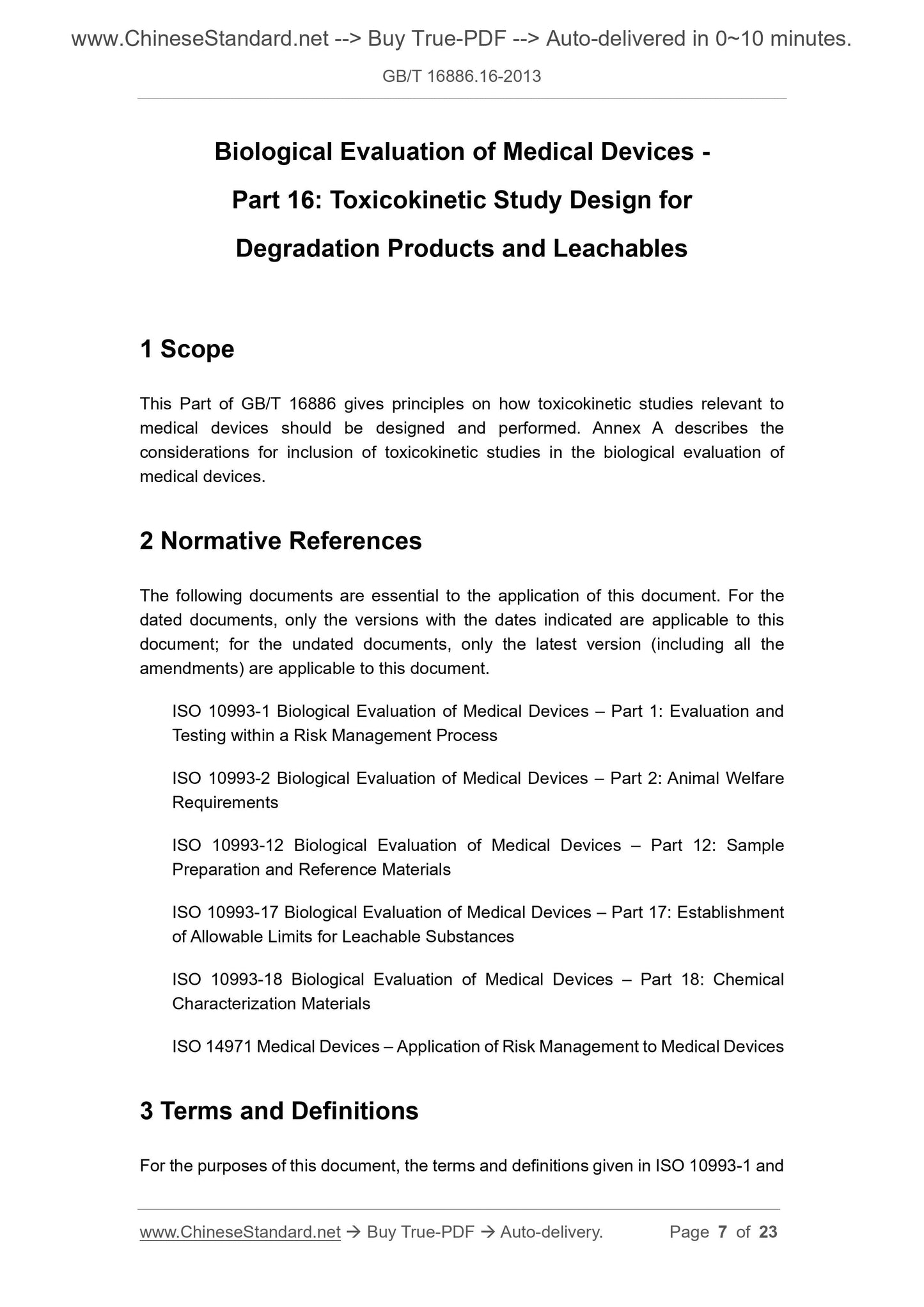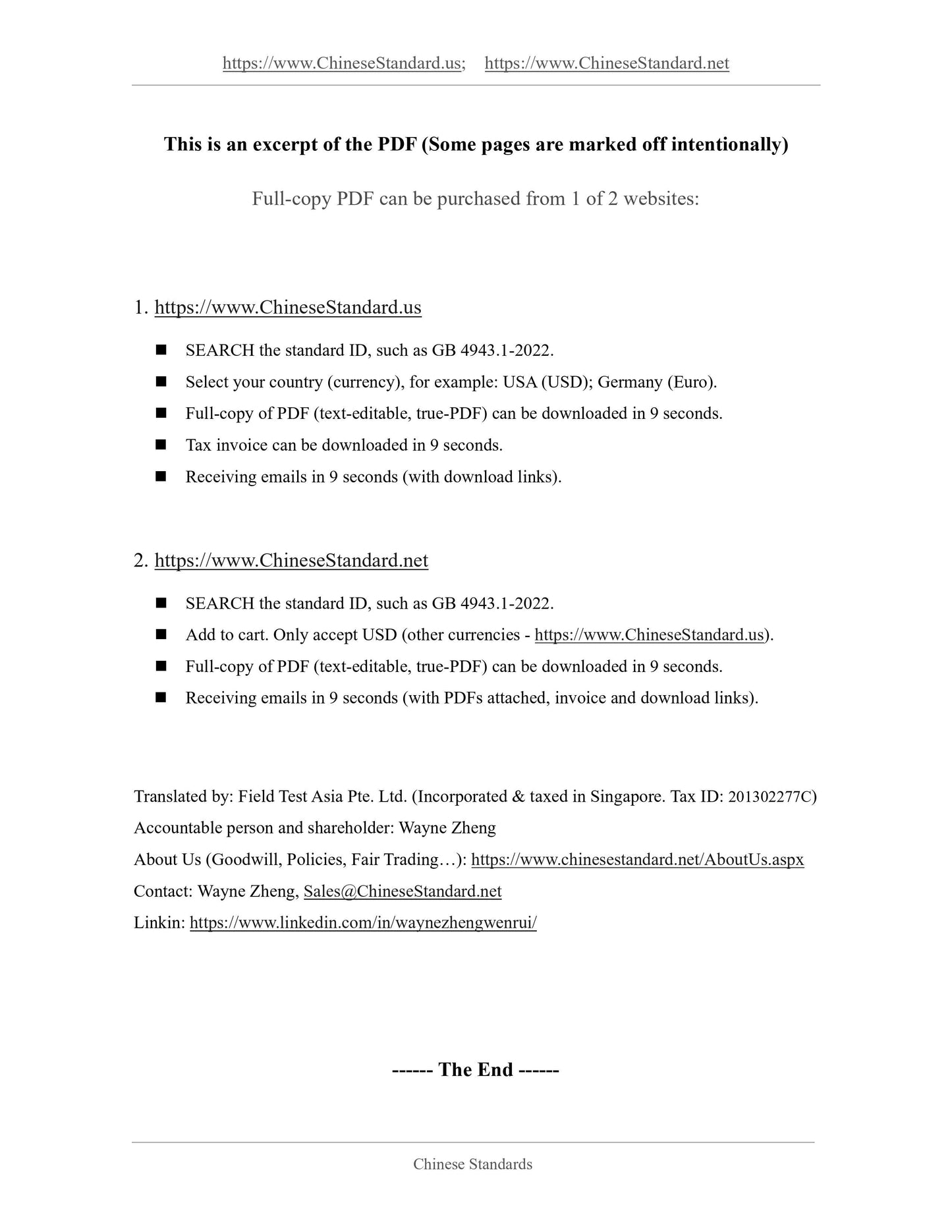1
/
of
7
PayPal, credit cards. Download editable-PDF and invoice in 1 second!
GB/T 16886.16-2013 English PDF (GB/T16886.16-2013)
GB/T 16886.16-2013 English PDF (GB/T16886.16-2013)
Regular price
$145.00
Regular price
Sale price
$145.00
Unit price
/
per
Shipping calculated at checkout.
Couldn't load pickup availability
GB/T 16886.16-2013: Biological evaluation of medical devices -- Part 16: Toxicokinetic study design for degradation products and leachables
Delivery: 9 seconds. Download (and Email) true-PDF + Invoice.Get Quotation: Click GB/T 16886.16-2013 (Self-service in 1-minute)
Newer / historical versions: GB/T 16886.16-2013
Preview True-PDF
Scope
This part of GB/T 16886 gives the principles for designing and implementing toxicokinetic studies for medical devices. Appendix A describes the medical deviceMechanical biology evaluates the issues that should be considered in the study of toxicokinetics.
Basic Data
| Standard ID | GB/T 16886.16-2013 (GB/T16886.16-2013) |
| Description (Translated English) | Biological evaluation of medical devices -- Part 16: Toxicokinetic study design for degradation products and leachables |
| Sector / Industry | National Standard (Recommended) |
| Classification of Chinese Standard | C30 |
| Classification of International Standard | 11.100 |
| Word Count Estimation | 15,190 |
| Older Standard (superseded by this standard) | GB/T 16886.16-2003 |
| Quoted Standard | ISO 10993-1; ISO 10993-2; ISO 10993-12; ISO 10993-17; ISO 10993-18; ISO 14971 |
| Adopted Standard | ISO 10993-16-2010, IDT |
| Regulation (derived from) | National Standards Bulletin No. 25 of 2013 |
| Issuing agency(ies) | General Administration of Quality Supervision, Inspection and Quarantine of the People's Republic of China, Standardization Administration of the People's Republic of China |
| Summary | This standard specifies the design and implementation of the principles of kinetic studies of medical devices poison generations. Appendix A describes the problem Biological evaluation of medical devices pharmacokinetic study of poisoning should be consid |
Share
